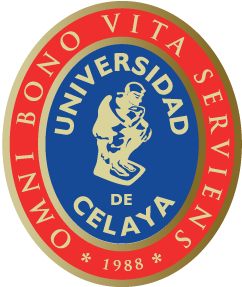Critical thinking in our daily lives
Every day we consume information in a wide variety of media: mass media, social networks and what we hear "by word of mouth". We are well aware that much of the information we receive is not from reliable sources, yet we continue to consume such information (or misinformation) and, in the worst cases, to spread it. Why do we continue to believe implausible, illogical claims without evidence to back them up? The 4th semester students of Communication and Audiovisual Media of the University of Celaya various projects have been carried out to explain these phenomena.
There is an online game called Bad News. In this game you assume the role of a fake news writer and you must create the most eye-catching fake news to get as many (fictitious) followers as possible with catchy headlines based on the didactic and funny explanation that is integrated in each level of the game. The creators of Bad News are a multi-disciplinary group of researchers, journalists and media experts who analyze the phenomenon of misinformation, created this media literacy tool in conjunction with other educational programs. What they are looking for is that by allowing the user to experience how fake news works, resistance to it increases.
Inspired by the well-known game Bad NewsThe challenge for the students of Communication and Audiovisual Media was that in a couple of classes they had to come up with a creative way to explain the phenomena that influence the distortion of the information we consume on the Internet and social networks. Their results are presented below:
Fake news: The phenomenon of broadcasting and dissemination of fake news has had a great negative impact on democracy and different areas of social life. That is why students Victoria Rábago and Ángel Magueyal Zamarroni designed an interactive quiz in which the challenge is to identify whether the news that appears on the screen is real or fake news. You can take this quiz to identify how likely you are to believe fake news by taking the following quiz click here.
Churnalism: Students Lucero Ruiz Guzmán and María José Banda Amézaga invented a game in which they exemplify the results of churnalism. Churnalism is a practice that consists of copying and pasting textually the content of a page in many others. It usually happens in content blogs and even in the media that replicate the content found in other sources, without analyzing or adding original content. This is why when looking for certain information, definition, content, we usually find the same text (usually deficient) in multiple pages, because each page replicates the content of the previous one. The game created by Lucero and María José leads players to discover this bad practice, to invite them to think about it and avoid it. You can see the video of the game in action here.
Troll farms: Jorge Mauricio Flores and Erick Hernández created a video and a game in Kahoot to explain to the audience what troll farms are and how they work. On the Internet, more specifically in social networks and discussion forums, it is common to find trolls, i.e. profiles of people who tend to criticize, annoy or attack with comments profiles that express opinions different from theirs. Sometimes this work is carried out by bots. But there are also TROLL FARMSThese are companies that hire people to create fake profiles on social networks and make comments for or against according to the needs of the clients who hire them, disguising this activity as "public relations" actions.
Filter bubble: The search results and posts we see on our social networks are based on predictions made by algorithms based on our characteristics, preferences and previous online activity, this is why if you are planning your next trip abroad on your Instagram account you see ads for cheap flights. But it's also because of this bubble filter that when you consult information on the Internet you only find a part of all the existing information, since it is filtered according to your previous online activity, thus limiting you from seeing information or points of view other than your own, which in turn prevents you from seeing the whole picture. To explain this concept in a visual way, students Paulina Aguilar and Ana Laura Saavedra made this animation.
Resonance chamber or echo chamber: Constanza and Celeste made a short film with a lot of humor in which they show a conversation of a (fictitious) group whose members have a very deep-rooted opinion in their thinking and are not open to listen to other visions, as an example of the phenomenon called echo chamber. Note, the example was taken to the extreme and does not represent the opinion of the creators.
Clickbait: To exemplify in a didactic and fun way how pages are created whose purpose is to obtain the greatest number of clicks possible regardless of the quality of the content, students Andrea Rentería and Carolina Villegas designed a board game in which players must find the titles with the greatest potential to obtain clicks according to the classification of the content of the notes. The player who accumulates the most titles classified in the correct category wins the game.
FOMO Syndrome : To exemplify the syndrome called Fear of Missing Out, students Alexandra López and Arturo Centeno recorded a video as a "social experiment" in which they asked a group of volunteers to participate in a dynamic that reflects the feelings of missing out on something because they don't have it with them or can't consult their phone, with this activity carried out in a couple of classes, the students seek to disseminate and above all educate about the existence of these phenomena to promote more critical thinking when consuming information in our daily lives. We recommend that you share this content with all your contacts, in order to contribute to the fight against disinformation and become a more critical society.
